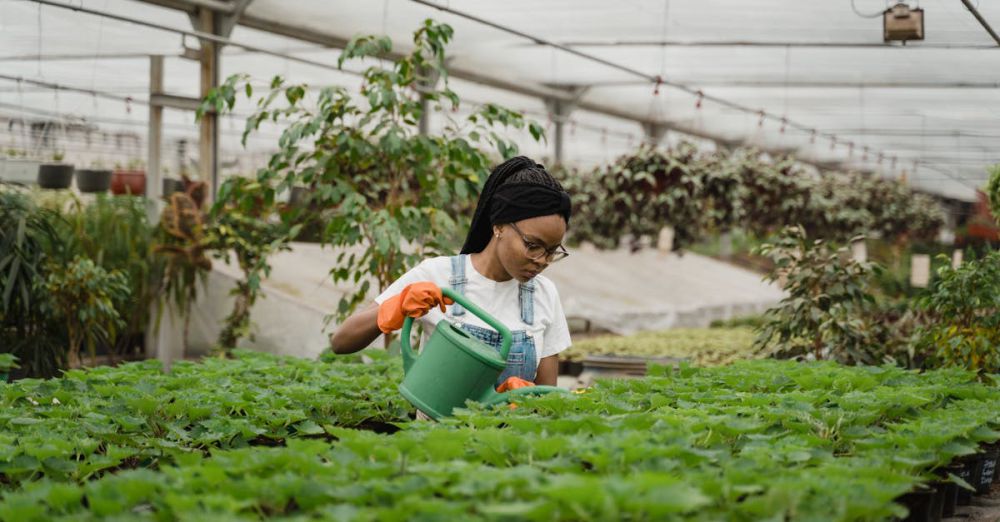What Are the Best Urban Gardens for Growing Fresh Herbs
Urban gardening has become a popular choice for city dwellers looking to cultivate their green thumbs, even in limited spaces. Among the various crops one can grow, herbs stand out for their versatility and flavor-enhancing qualities. Growing fresh herbs not only elevates your culinary experiences but also contributes to a sustainable lifestyle. Whether you have a balcony, a windowsill, or a small backyard, there are several methods to create an urban garden ideal for herb cultivation.
Container Gardening
One of the simplest and most effective ways to grow herbs in an urban setting is through container gardening. This method allows you to utilize pots, troughs, or even repurposed items like old buckets and crates. Herbs such as basil, cilantro, and parsley thrive in containers, which provide excellent drainage and control over soil quality. When selecting containers, opt for those that are at least 12 inches deep to accommodate root growth while ensuring they have drainage holes to prevent waterlogging.
Choose potting soil specifically formulated for container gardening. This type of soil retains moisture while allowing excess water to escape, creating an ideal environment for herbs. Position your containers where they can receive at least 6 hours of sunlight daily, such as on a sunny balcony or windowsill. Regularly check the moisture level—herbs generally prefer well-drained soil but should not be allowed to dry out completely.
Vertical Gardening
If you’re short on horizontal space, vertical gardening presents a fantastic solution. Vertical planters, wall-mounted planters, or even hanging baskets can host a variety of herbs, maximizing space without compromising growth. Consider using a vertical garden system that allows you to stack pots or create wall gardens, enabling you to grow herbs like thyme, rosemary, and mint without taking up valuable ground space.
When setting up a vertical garden, ensure that each herb receives adequate sunlight. This may require rotating pots or adjusting the arrangement based on your available light sources. Regular maintenance, such as pruning and watering, is essential to keep your herbs healthy and thriving in a vertical setup.
Hydroponic Gardening
For those who want to dive into more advanced gardening techniques, hydroponics offers a soil-free method for growing herbs. This system utilizes nutrient-rich water to feed plants directly, allowing for faster growth and higher yields. Hydroponics can be particularly advantageous in urban settings where soil quality may be poor or limited.
A simple hydroponic system for beginners can be created using a deep-water culture setup or a nutrient film technique. Many kits are available for purchase, making it easy to start. Herbs such as basil, mint, and dill flourish in hydroponic environments, and the method requires less water than traditional gardening. Plus, hydroponics can be set up indoors, allowing you to grow herbs year-round regardless of outdoor conditions.
Community Gardens
If you lack personal space for gardening, consider joining a community garden. These shared plots allow urban residents to cultivate plants together, fostering a sense of community and collaboration. Many community gardens have designated areas for herbs, making it easy to grow a diverse selection alongside fellow gardeners.
Participating in a community garden not only provides access to land but also offers the opportunity to learn from experienced gardeners. You’ll gain insights into herb cultivation, pest management, and organic gardening practices. Additionally, sharing the fruits of your labor with others can enhance your gardening experience and deepen your connection to your local community.
Cultivating a Herb Garden Indoors
Growing herbs indoors is a viable option for those who may not have outdoor space. A sunny kitchen window can serve as the perfect spot for your indoor herb garden. Start with easy-to-grow herbs like chives, oregano, and basil. Use small pots with good drainage, and ensure proper lighting—supplementing with grow lights if necessary.
Indoors, pay attention to humidity levels, as dry air can hinder herb growth. Regular misting or using a humidity tray can help create a more favorable environment. Indoor gardening allows you to have fresh herbs at your fingertips, enhancing your cooking and providing an inviting atmosphere in your home.
Creating Your Urban Herb Oasis
Growing fresh herbs in an urban environment is not only feasible but also enjoyable. By utilizing container gardening, vertical gardening, hydroponics, community gardens, or indoor setups, you can cultivate a thriving herb garden regardless of your living situation. With a little creativity and dedication, you’ll be able to enjoy the flavors of homegrown herbs while contributing to a greener urban landscape. Embrace the joy of gardening and savor the benefits of fresh herbs in your meals and lifestyle.







